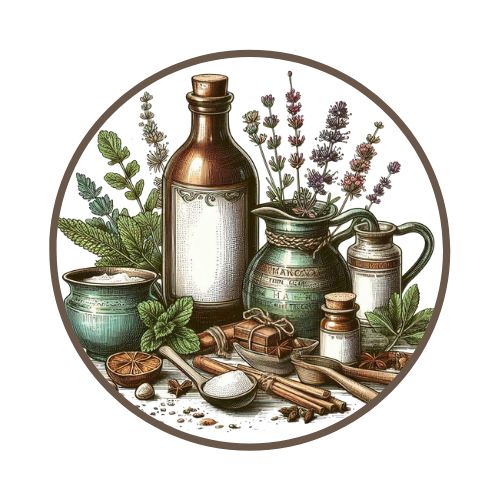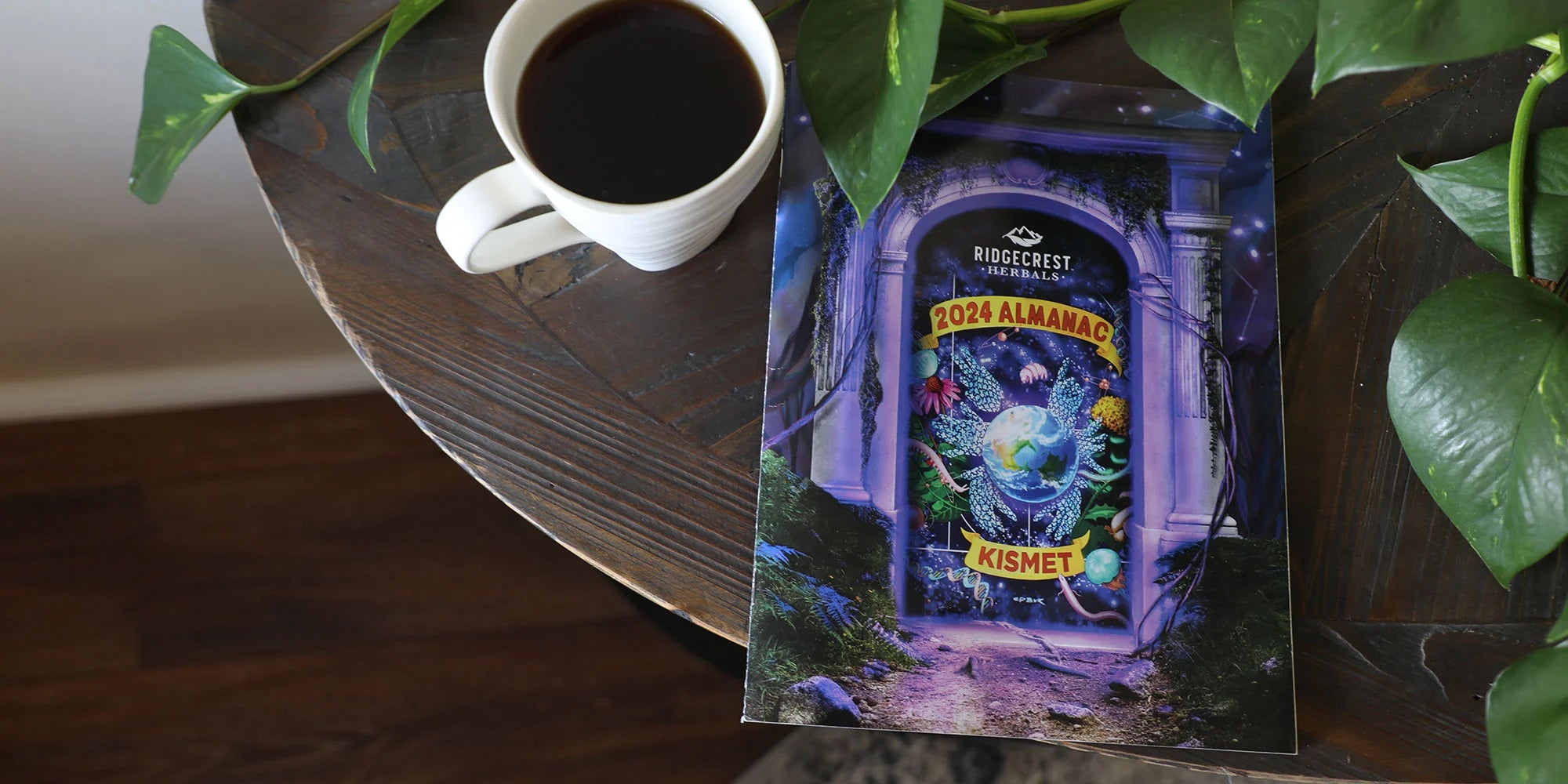Herbal tonics are a wonderful way to take healing into your own hands! It is a practice carefully cultivated, perfected, and passed on by our ancestors since before written history. In this modern age, there is so much information from various and sometimes contradictory sources. Misinformation is everywhere, so always use trusted sources, like reliable field guides, experienced herbal practitioners, or certified herbal schools. You want to be sure before using herbal remedies internally and externally. Labeling and storing your herbal tonics properly is one of the easiest ways to keep mistakes at a minimum and safety a priority!
“Herbal Tonic” is a catch-all term for herbal remedies taken in liquid forms. It can refer to tinctures, infusions, decoctions, oils, vinegar, and syrups! Generally, making an herbal tonic requires us to extract its properties into a liquid form to increase the strength and control the dosage of those medicines! There are various ways to extract these properties, which will differ based on your intentions. The chart below can help you decide which liquid to use for your tonic! This is basic information, and I highly recommend doing more in-depth research before starting herbal crafting!
LIQUID EXTRACTION CHART
- Water extractions can be used to make tea medicine or an herbal rinse and is suitable for all ages. Water is excellent for extracting plants' minerals, mucilage, polysaccharides, and prebiotic compounds. Shelf-life is 2 to 3 days in an air-tight container refrigerated. Water is generally used in two ways:
- INFUSION: Use a plant's leaf, flower, seed, or root and steep for 5-10 minutes in hot water.
- DECOCTION: Use a plant's root, bark, or seed and steep for 20-30 minutes in hot water.
- Milk infusions are great for soft plant matter like flowers, leaves, and fruit, which infuse well in cow and nut milk. This is a great way to make herbal medicines go down easier and is great for children! Shelf-live is one day, but it's best to drink fresh. Bring a saucepan of milk and herbs to a simmer, strain, and enjoy with honey.
- Honey infusions are another great way to make herbal medicines easy and delicious. Adding honey to water infusions, decoctions, or tinctures, is a great way to make herbal syrups. Honey also has medicinal qualities. Shelf-life is about a month. In a double boiler, place honey and herbs in the middle container and allow to infuse for 30 minutes, stirring. Then strain and put in an air-tight container.
- Oil extractions can be used externally and internally depending on the plants used and the desired results.
- Infuse cooking herbs into your edible oil in a slow cooker on low for 48 to 72 hours or in an air-tight container for 2 to 3 weeks. Shake once per day. Shelf life is generally six months to a year if you use dried herbs. Use in your favorite recipes!
- Infuse your choice of oil in the same way with skin-safe herbs, strain, and add to a double boiler with beeswax to make a salve!
- Alcohol extractions are used to make alcohol-based tinctures and are helpful for various issues. Alcohol extracts include resins and essential oils. They have an incredibly long shelf-life of a minimum of 1 year. Brandy or Wine is good for soft plant parts. Vodka, Everclear or Whiskey will be better at extracting properties from roots and bark. To make a tincture, place your dry or fresh herbs (they have different requirements) in an air-tight jar and cover fully with the desired alcohol (preferably 100-120 proof), label, and place in a dark, dry place for four to six weeks shaking daily. Strain and put an air-tight container in a dry, dark place, and enjoy!
- Vinegar extractions are used in a few ways: cooking, medicine, and cleaning! Vinegar is an excellent option for people trying to avoid alcohol; it draws out minerals more effectively than alcohol and has a better flavor. Shelf-life refrigerated will last about three months. Vinegar extractions are made the same way as alcohol ones, only substituting the alcohol for your desired vinegar (apple cider or balsamic).
- Witch-hazel extractions are used for health-supporting applications and skin irritations. Today, high-quality witch hazel, distilled as an extract, is still beloved as a gentle skin toner and astringent. It is a key ingredient in the best DIY skin cleanser, makeup removers, and room sprays. To make, gather skin-friendly herbs in an air-tight container, cover with witch-hazel, shake, and place in a dry, dark place for two weeks, shaking daily. Strain and use! The shelf life varies from 2 weeks to 3 months!
- Glycerin extractions Glycerin extractions are beneficial because they attract moisture from the surrounding environment. This property makes them effective in hair and skin products, helping to keep these areas hydrated. Glycerites can also be safely consumed in tea or juice. To make a glycerin extraction take fresh herbs, but dried herbs can be used if reconstituted with water. Fill a clean mason jar with fresh herbs and cover completely with glycerin, leaving 1 inch of space at the top. For Dried Herbs: Use a mixture of 3 parts glycerin to 1 part distilled water (e.g., ¾ cup glycerin to ¼ cup water). Seal the jar and place it in a cool, dark location for 4-6 weeks. If the herbs float above the glycerin, add more glycerin to keep them submerged. After the steeping period, strain the mixture through cheesecloth or a mesh strainer (use a paper filter for powdered herbs) to collect the liquid. Extracted liquid may be less than what you put in due to absorbing into the herbs. Store the glycerite in clean glass bottles with droppers, label them, and keep them in a cool place, away from direct sunlight. Shelf Life: Use the glycerite within 24 months for best results.
Happy extracting!
About the Author
 |
Birdy Adams Our Customer Service Fairy (AKA Customer Service Representative), she has been taking care of customers with care, compassion, and amazing emails since 2022. Birdy brings joy, positivity, and magic to our customers. She describes herself as creative, optimistic, outdoorsy, animal/nature-loving, friendly, and a hippy/witch. Her favorite herb is Rosemary, and she proudly recommends ClearLungs® Immune and Essential Eyes®. Learn more about our team here. |



